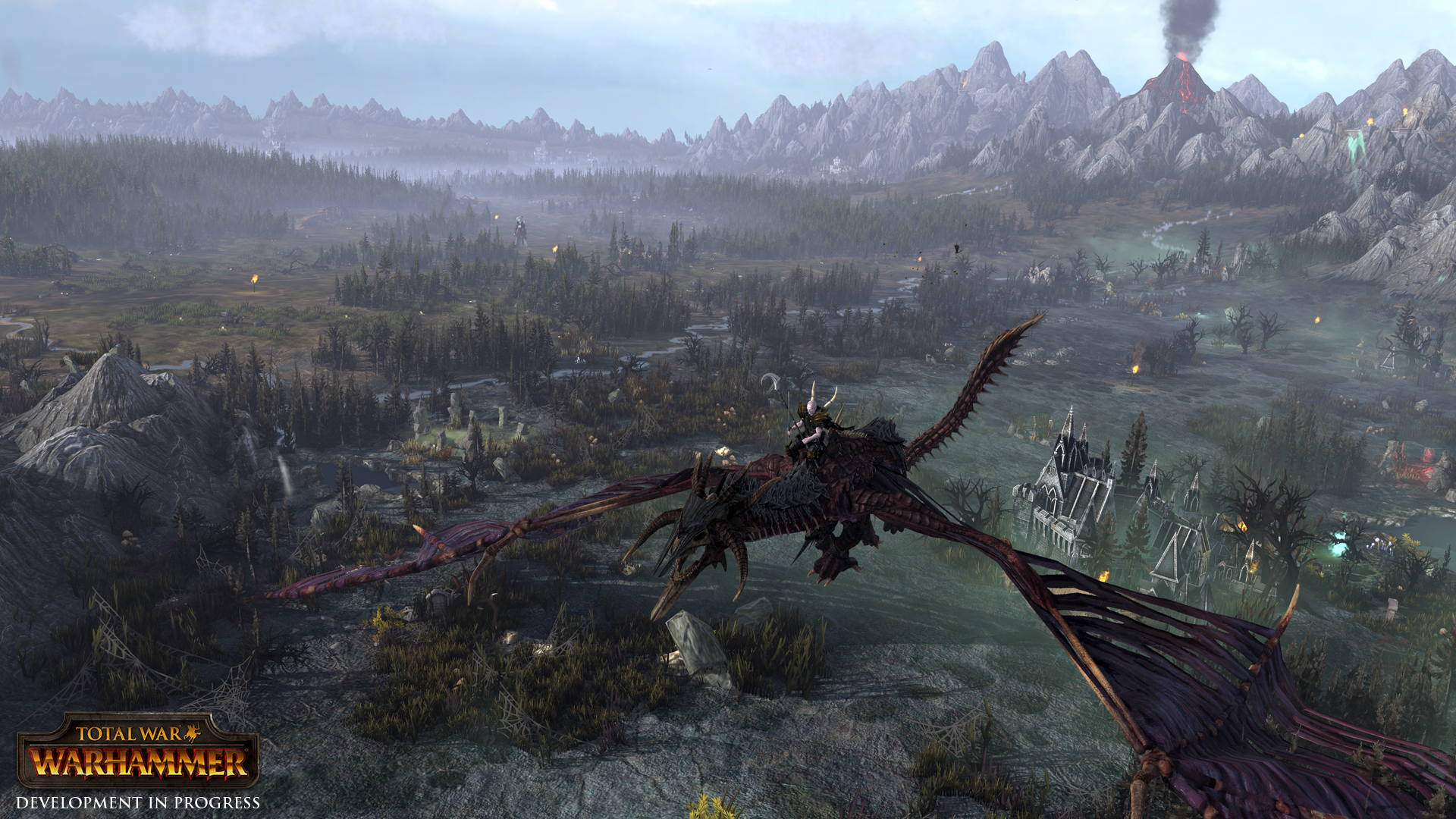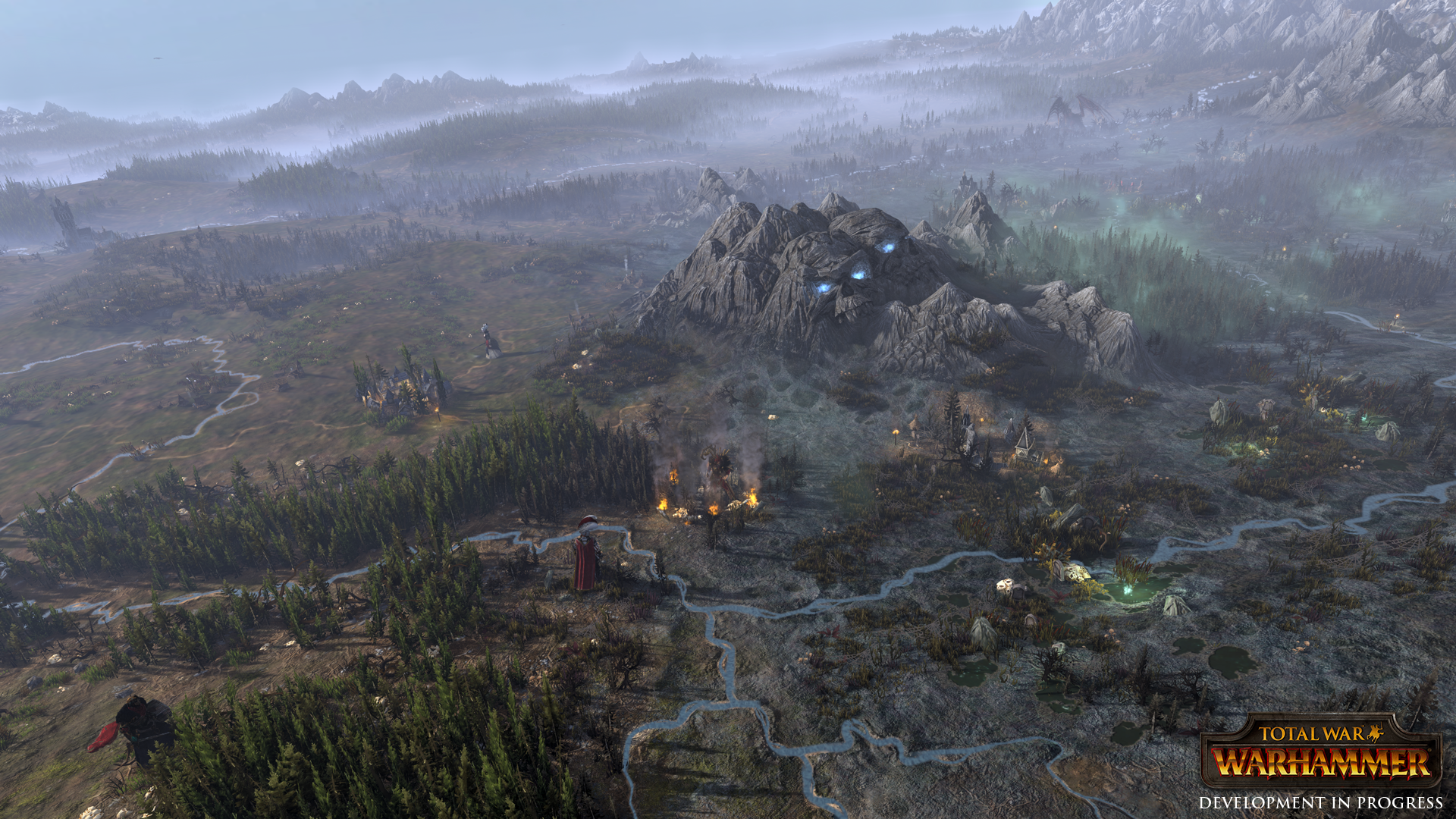Total War: Warhammer – how to make fantasy wars authentic


James Whitston
James Whitston is the campaign designer for Total War: Warhammer at Creative Assembly. This isn't the first Total War game he's worked on, but it is the first one he's worked on that includes bats, zombies and a faction called Chaos.
The most refreshing thing about Total War: Warhammer is that, instead of commandeering gruff human soldiers, you can set hordes of malignant bats and zombies on your opponents. As someone intimidated by the gravity of the mainline Total War games, playing this Warhammer installment presented a more natural learning curve than I was expecting. The world of Warhammer is, y’know, not real, which makes learning its logic a bit more welcoming.
My two hour hands-on time was a showcase for the Vampire Counts faction. As we know, they have no ranged attacks, but certain other strengths compensate for that: for example, you can send a horde of bats to counter your opponent’s ranged attacks, creating an opportunity for your more powerful assets to storm the battlefield. You can also summon skeletons and zombies on the battlefield, which is more tactically beneficial than it initially seems (we’ll get to why).
Matt Elliot had hands-on with the Vampire Counts a couple of weeks ago, too, and there’s a video you can watch over here to get a better idea. During my time with the game I had the chance to chat with campaign designer James Whitston, who explained some of the challenges – and benefits – of developing a Total War game in the Warhammer universe.
“We know how to do massive scale combat, we’ve done it for 15 years,” Whitston said. “We’ve had cavalry units, chariots, elephants... so we have a really solid foundation. That allowed us to take the new things – flying creatures, massive monsters, magic – and really focus on getting those right.”
Adapting a Total War game for the Warhammer universe is no small feat, but the studio approached it in much the same way as it has the real-world based instalments. “Carrying that wealth of detail into the campaign side of things was very similar to how we start our historical games, where there’s a long period where everyone has their head in books,” Whitston said. “Only this time it’s the history of another world altogether. [The Warhammer universe] has the same amount of detail and opportunities, design-wise, as the real world.
“Then, Games Workshop sent us all the models and everything and we played every single race to get our heads around what the strengths and weaknesses of each were. We had a debate about vampire counts and their lack of missile units: do we fudge a missile unit? We decided that a lack of those units was a flavour of that faction. So you use bats, and spells. It would have been a mistake to throw that flavour away.”

There were roadblocks in the beginning – aspects of the Warhammer fiction and the Total War template that didn’t immediately fit – but Whitston says most of the seemingly incompatible elements ended up fitting together nicely. “There’s such a wealth of detail [in the Warhammer world] that whatever we had in our own minds that we wanted to do, there was something there already that would accommodate it.
Keep up to date with the most important stories and the best deals, as picked by the PC Gamer team.
“The other aspect of that is that there was stuff we found [in the fiction] that charged a bell in our head, leading to a new idea. It was a two way street, and there were limitless opportunities. We’ve been making the Total War games for 15 years so we’ve got a huge feature set and we’re able to pick and choose to get each race’s feature set right.”
The fictional universe makes what is usually a sternly realistic game more friendly and approachable. In the case of the Vampire Counts, some interesting tactical maneuvers can arise that would be totally off-bounds in a real world scenario. “It’s been interesting keying [the ‘raise the dead’ ability] into the battle AI,” Whitston said. “if an enemy vampire is being charged by a cavalry unit, you’ll see him quickly cast a spell and raise skeletons right in front of the cavalry charge.”
In terms of diplomacy, all starting relationships will reflect how the factions interact in the Warhammer lore. Of the factions Whitston mentioned, only Chaos aren’t interested in making friends, which will ring as common sense among Warhammer afficiandos.
“At [the beginning of the game] the Vampire Counts have only just re-emerged after being supposedly wiped out, so at that point the Empire don’t really know who they are,” he said. “They’re in a neutral situation diplomatically: dwarves and green skins are hostile [automatically], but that’s not to say that’s set – you can do things to influence that.”
Total War: Warhammer releases May 24.

Shaun Prescott is the Australian editor of PC Gamer. With over ten years experience covering the games industry, his work has appeared on GamesRadar+, TechRadar, The Guardian, PLAY Magazine, the Sydney Morning Herald, and more. Specific interests include indie games, obscure Metroidvanias, speedrunning, experimental games and FPSs. He thinks Lulu by Metallica and Lou Reed is an all-time classic that will receive its due critical reappraisal one day.

